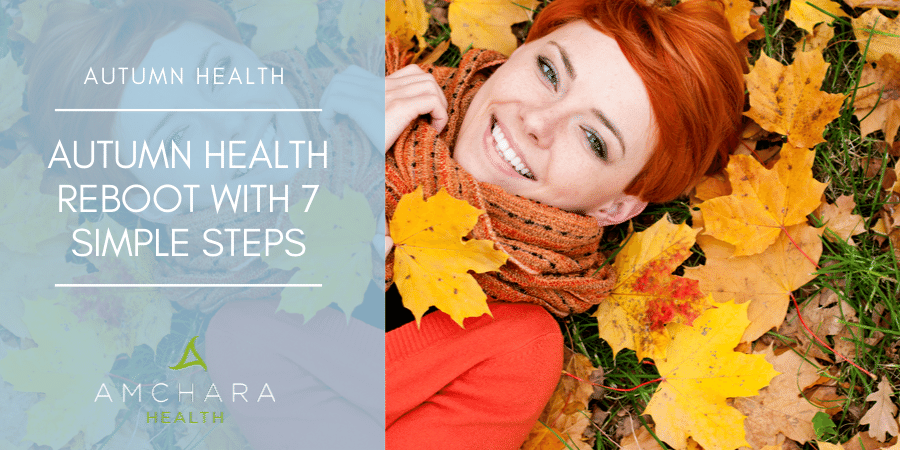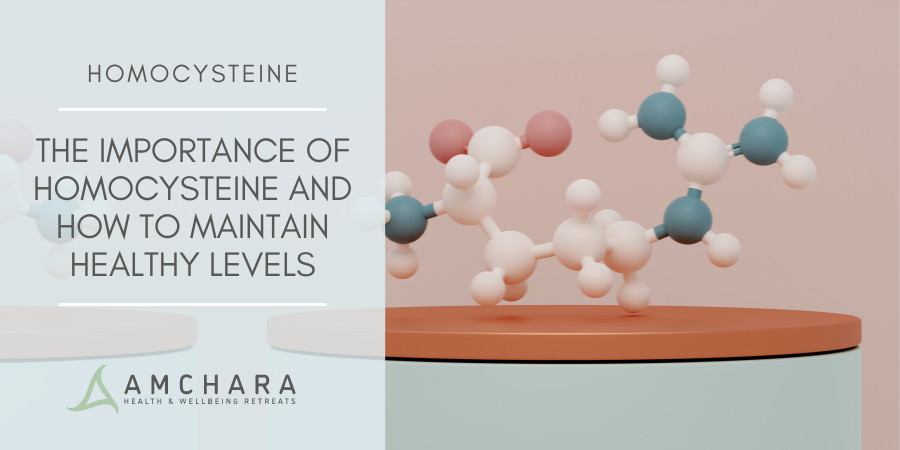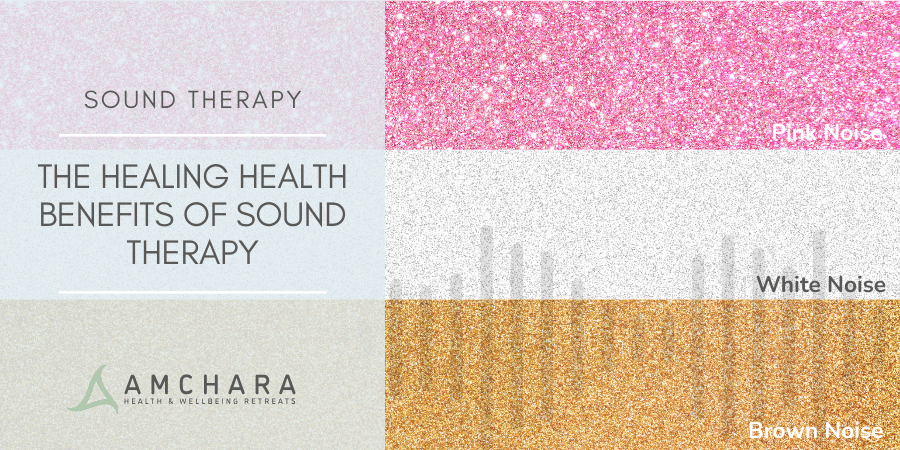The seasonal change to autumn brings some beautiful alterations to the landscape and deciduous plants start to change colours to the classic autumn hues of oranges, reds and browns. The onset of cooler weather and shorter, darker days can also bring a change in your emotions and motivation. Autumn can leave you feeling stagnant and healthy habits built over the summer months may slip.
We always take an evidence-based approach and aim to provide you with actionable knowledge and tips to help you on your journey to optimal health. In this article we will look at 7 steps you can take to reboot your health this autumn.
1. Be active
Avoid the temptation to hibernate in the darker months and make a conscious choice to remain active. Make an effort to get out into the garden to rake up the fallen leaves, use the wet weather as a reason to declutter the house and tackle indoor jobs that may have been put off over the summer.
Taking a daily walk gets the blood flowing and spending time with nature is known to be a nourishing activity. The Japanese art of ‘forest bathing’, also called Shinrin-yoku, has been shown to reduce stress, improve relaxation and lower blood pressure (1).
Keep up with exercise routines and aim for a total of 30 minutes cardiovascular exercise, 5 days a week. Adding a couple of resistance exercise sessions a week also helps to support bone and muscle health. Studies show that regular physical exercise not only benefits the cardiovascular system but also improves mood and wellbeing.
2. Exposure to natural daylight
Exposure to UV rays from the sun stimulates the production of vitamin D. Commonly known as a bone supportive nutrient, vitamin D has also been shown to influence immune function and mood. Seasonal affective disorder (SAD) traditionally occurs in autumn and winter and is linked with reduced exposure to daylight and a lower level of vitamin D.
Daylight is also known to reset the body’s natural circadian rhythm. Light receptors in the eye send signals to the brain that control the release of hormones involved in sleep. Although sleep control is one major function associated with the circadian rhythm, research has also highlighted it is involved in other areas of health. A disrupted circadian rhythm has been linked to poor digestion, mental health issues, increased inflammation and alterations to immune function (2).
Ensuring you have good daylight exposure before midday helps to reset the circadian clock and may support sleep, mood and immune function.
3. Take vitamin D
Although sunlight is the best source of vitamin D, the strength of the sun during autumn and throughout winter can mean that not enough vitamin D is synthesised in the body. Some fatty foods like egg yolks and oily fish contribute small amounts and a supplemental form of vitamin D may be beneficial.
Current government recommendations are that adults take around 400iu (10µg) of vitamin D a day during autumn and winter. It is important to factor in quality with supplements – an oral spray form of vitamin D, absorbed directly into the blood vessels in the mucus membranes in the mouth, may optimise absorption.
4. Eat a rainbow
The 5-a-day recommended intake of fruit and vegetables is now thought to be an underestimation; some experts believe around 8-10 portions of fruit and vegetables is optimal, with an emphasis on vegetable intake as they are generally higher in fibre and lower in natural sugars.
Fruit and vegetables are rich in antioxidants that offer protection for the body and nutrients like vitamin C, vital for immune function. As the colder months bring more cold and flu viruses, optimising immune supportive nutrients may help with your body’s natural defences.
Autumn brings rich pickings of superb seasonal vegetables, including broccoli, kale, Brussels sprouts, cauliflower, Jerusalem artichokes, celeriac, fennel, swede, turnips, leeks and squash.
5. Avoid comfort eating
As the nights draw in and the temperature drops there is a natural desire to eat comforting, hearty foods. There can be cravings for carbohydrates – either simple carbohydrates like sugary, sweet foods or starchy carbohydrates like pasta and potatoes.
In modern life there is no longer the need to store calories over the colder months and better alternatives that are still warming and comforting include beans, brown rice, oats, buckwheat, sweet potatoes, squash and quinoa. These can be filling and incorporated into soups and stews but have much less of an impact on blood sugar and can help to keep unhealthy cravings at bay.
6. Use natural moisturisers
Colder temperatures mean the central heating is switched on – this, twinned with harsh cold winds during autumn can leave your skin feeling rough, dry and damaged. It is easy to reach for off the shelf moisturisers but often these contain chemicals that may have an impact on health, particularly hormone balance.
Choosing natural moisturisers can help to keep your skin healthy, enabling it to perform its many important functions in terms of your body’s overall health. Whilst skin health is often perceived in terms of beauty, it is also a vital part of your immune system, forming a natural barrier to prevent unwanted molecules and organisms from entering the body.
Oils such as warmed coconut oil, jojoba oil, and sweet almond oil can be applied after a warm bath or shower and keep the skin moisturised. Mashed avocado can be used as a face mask and an oat bath can soothe irritated skin.
7. Be creative
An active mind is a healthy mind – having a creative indoor hobby can help reduce stress levels, support mood and increase motivation. Activities such as painting, drawing, scrap booking, knitting and playing a musical instrument all allow a degree of mindfulness.
Mindfulness, visualisation and meditation not only help to combat stress and benefit sleep patterns but also improve eating patterns and participation in exercise (3), all of which promote better health. A daily meditation or mindfulness session of around 15 minutes or more is ideal.
Takeaway
Autumnal changes need not mean your health and wellbeing also change – taking positive steps throughout the colder, darker months can ensure you remain in optimal health.
If you suffer with SAD or other issues and would like some health advice, a one to one consultation with an experienced Personalised Health practitioner can help to guide you on factors involved and the best steps to take for your personal circumstances.
Did you find this article useful?
Do you struggle during seasonal changes?
Share your experiences and tips and help others in a similar situation.
Please share your thoughts in the comments.
Read this next:




